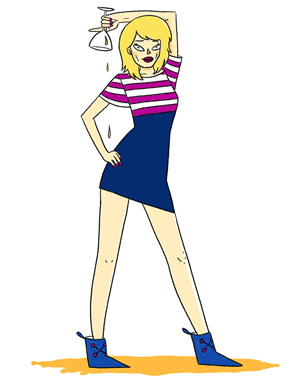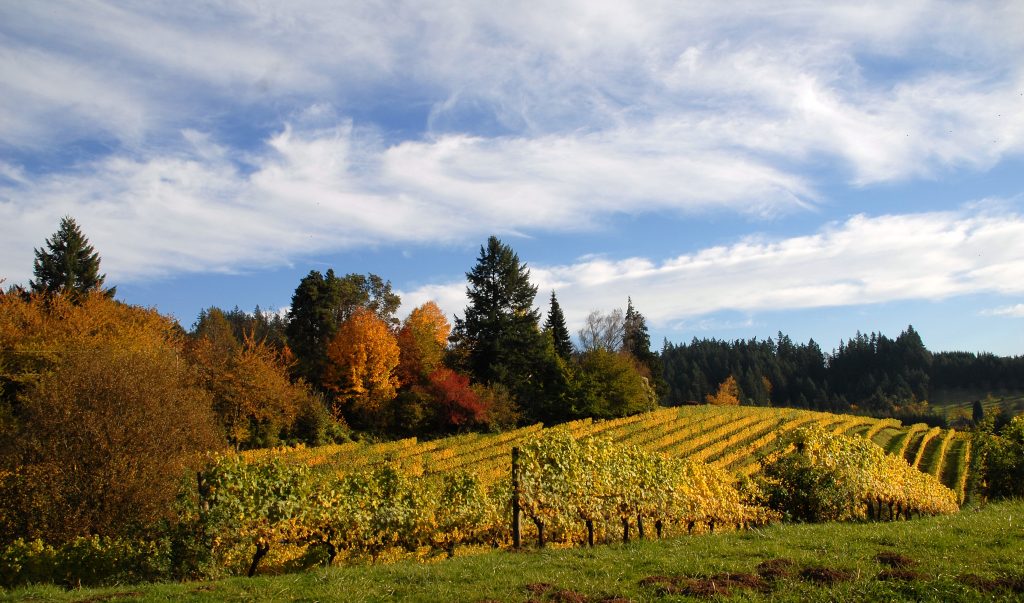
Coral Creek Chahalem Vineyards
Da I wanna be Burgundy? Da I wanna be Californian? Heck should I admit to being Chardonnay at all, when ABC (anything but chardonnay) still haunts the market?
Top producers in Oregon admit these questions and doubts befuddled the progress of Chardonnay in this temperate climate.
The majority followed the cheap, blowsy Californian model – chasing a price sensitive market for which they cropped a wapping 8 tonnes of fruit an acre. More recently there has been the desire to represent the terroir of Oregon. So what’s that? Well in broad strokes it’s cooler than in California allowing the grapes an extended hang time on the vines for 120 days – that’s long. Burgundy is typically 100 days from flowering to harvest. Oregon is a maritime climate cooled at night by the breezes from the the Pacific Ocean.
Not only is the season long, but the sun does not set until 9.45pm. So there’s plenty of light to ripen Chardonnay, while the acidity is protected by cool nights and a season stretching into the autumn. Hence it’s quite possible to make a style that’s between Burgundy and California – more forward and fruity than Burgundy, but with a great deal more restraint than Sunny California. Well that’s the theory.
The English Nose tootled along to put Oregon Chardonnay to the taste test in the unlikely formal setting of the ballroom of One Great George Street, just off Parliament Square.
Josh Berstrom studied oenology and viticulture as a post graduate for 2 years in Burgundy before returning in 1999 to the 13 hectare vineyard his parents had planted in the Dundee Hills, a site which overlooks the Willamette Valley. “At the time Chardonnay had not followed the rise in fortune of Pinot Noir and people wanted big chaptalised wines, so we made cash cow wines, working backward to a price point. We felt we didn’t have the freedom to create our own identity. But when we brought in Burgundy clones and planted them on our best slopes, we became one of a few wineries that wanted to break the mould. Now we make wines of intension and of world class calibre.” No modesty here.
Berstrom have 5 estate vineyards over 84 hectares all in prime spots. The 2014 Bergstom Sigrid Chardonnay certainly has a world class price tag at an impressive £58. It also has a rich citrus aroma. The palate is both compact and generous. It’s certainly bigger than a Burgundy, but it retains focus and had nice length and freshness.
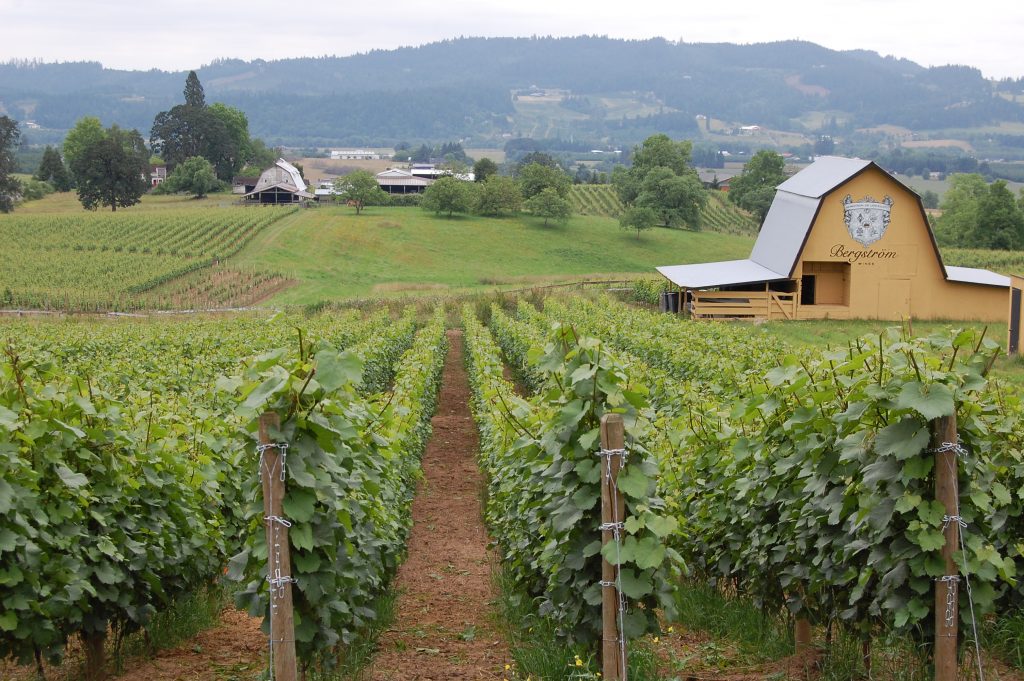
CWK Photography. Andrea Johnson and Bergstrom Wines
“We have the notion of succulence with balance,” says Josh. “Our subsoils are very old and very well drained. We have big diurnal temperature (the difference between the highs of the day and the lows of the night) so we have both acidity and fruit… and with this we have succulence.”
But why so expensive? David Adelsheim explains. “We exist in a market and climate where we have a choice. We can crop at 90 hl/ha and make cheap wines or crop lower and make quality. Fruit represents 70% of the bottle cost. There is certainly some quality fruit in Adelsheim Vineyard Caitlin Reserve Chardonnay and it was among my favourites tasted that day. It is made with Burgundy clones and has a somewhat reserved aroma. It is neat, bright and energetic with both fresh & ripe citrus flavours. David stops the wine going through its malolactic fermentation, where appley malic acidity is transformed to softer lactic acidity, which accounts for the straighter palate and zestiness. This would retail at about £40.
David Adelsheim (below) says Burgundy taught him, “You should not wait for finished flavours. If you pick Chardonnay and it tastes delicious, you have waited too long. 2014, 2015 and 2016 were very warm vintages and if you did not pick early, you had mush. You must pick with some greenness.”
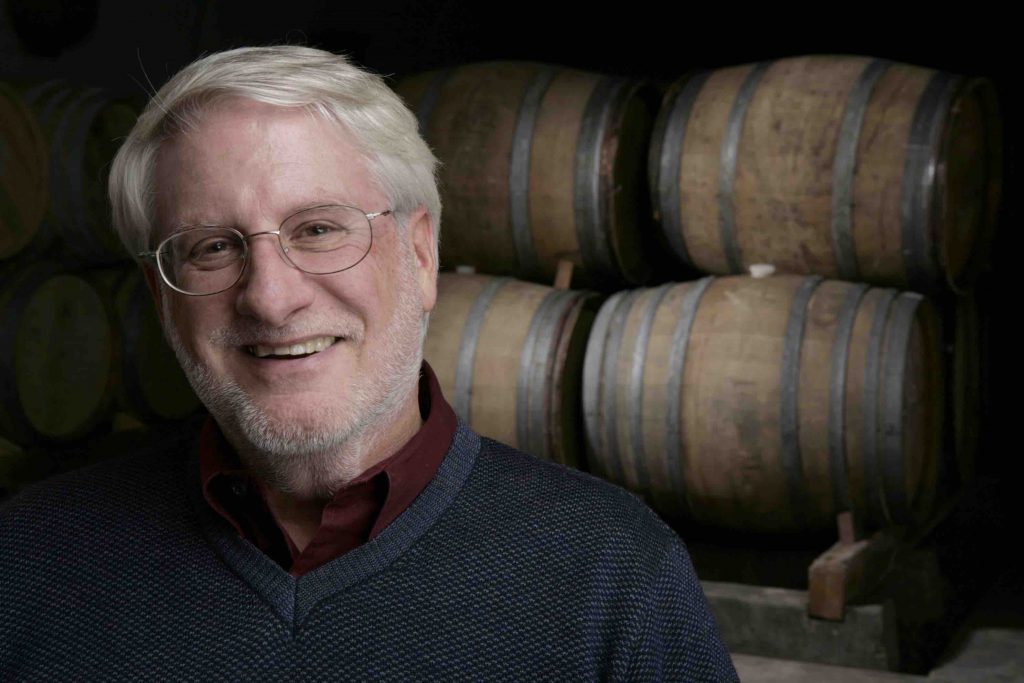
There was also much talk in the room of new oak – less of it. Eugenia Keegan makes the wine for the wine company Kendall Jackson and comments, “Kendall Jackson made big Chardonnay. The question was, ‘How do we make Chardonnay serious again?’ There was too much new oak and maybe too much alcohol. I fantasised about making a cool climate Chardonnay, but had difficulty persuading the company.”
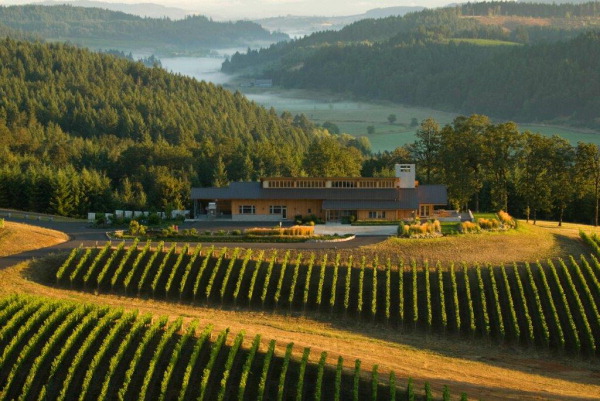
She got her way with Gran Moraine (winery above). The 2014 Yamhill-Carlton Chardonnay is succulently juicy. It is luscious, but sapid on the finish. I found the nose quite oaky, but she uses large 500 l fudres and just 12 % new oak. “The one word to describe Oregon Chardonnay is fresh…that and texture. It’s always challenging to build this into a wine,” she says. It ages for 16-18 months in oak, resting in stainless steel for 2 months before bottling. “It was a bit like the audience had grown up. They no longer wanted ketchup on their eggs, but wanted to taste the eggs. You can easily change two things – picking earlier and using less oak.”
If you fancy a fresh un-oaked Chehalem are making a Chardonnay in INOX tanks. It has a spicy aroma followed by a floral palate, bright and fresh. It’s a relatively straightforward wine, but most appealing for short term drinking.
The more serious Oregon Chardonnays should certainly mature well. 2008 Chehalem Ian’s Reserve Chardonnay was rich and nutty with a firm backbone and marmitey edge to the finish. Not bad at all.
You can rely on a Burgundian to make a good Chardonnay when abroad. Drouhin recognised the potential of Oregon back in the late 1980s when they planted in the Dundee Hills. Arthur Chardonnay is delightful. Lightly creamy and floral with a fresh citrus line through the middle. It’s elegant and silky with tension and purity at the end. Moreover it’s rather good value at 25-30 quid. Veronique Drouhin ages part of the harvest in oak, but keeps some in stainless steel to bring freshness and minerality to the blend. It’s named after her son Arthur.
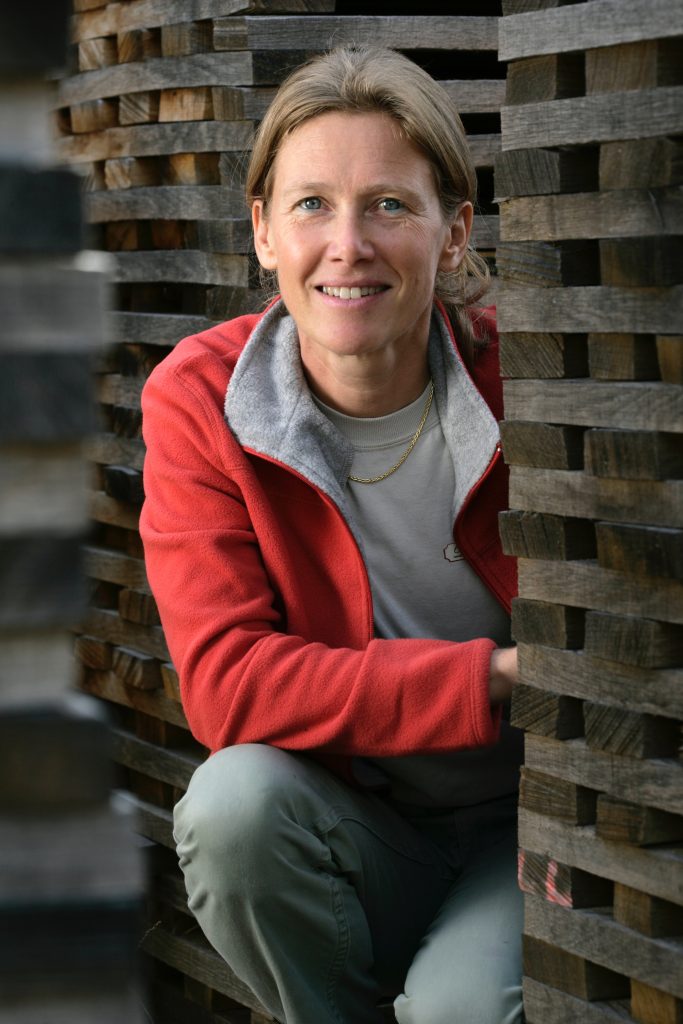
Chardonnay is seriously ‘on trend’ in Oregon now. Astonishingly Pinot Noir is being grafted over to Chardonnay. Frankly I would not throw this baby out with the dishwater… there’s lovely Pinot in Oregon too. The Nose has twitched appreciatively in many a glass and will share findings soon.
So it seems Oregon producers may have struggled to find an identity, but have found the answer to their questions and laid their doubts to rest.
Don’t emulate, strike a pose… and be proud to make Chardonnay.
Stockists
Adelsheim Vineyard Caitlin Reserve Chardonnay (UK Importer, Boutinot)
Bergstrom, Sigrid Chardonnay (UK Importer, Roberson)
Domaine Drouhin Oregon, Arthur Chardonnay (UK Importer Fields, Morris & Verdin)
Gran Moraine, Yamholl-Carlton Chardonnay (UK Importer, Fells)

